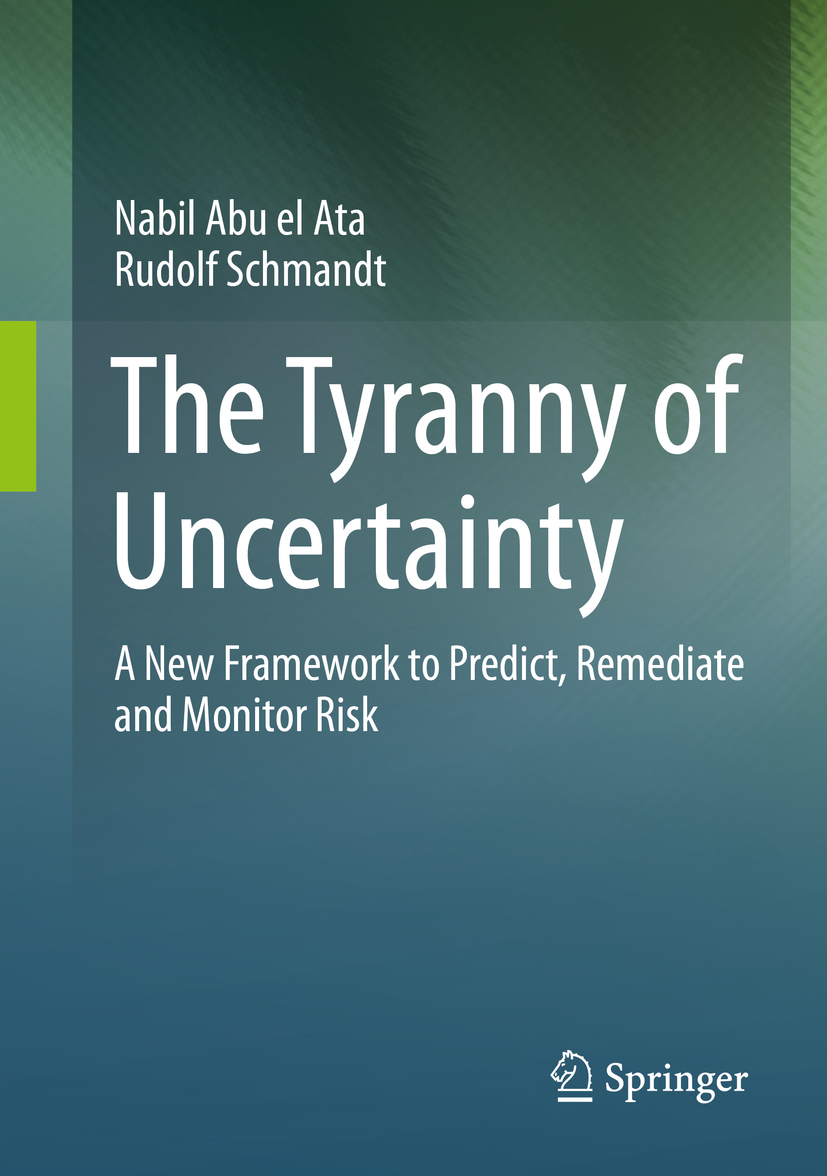Books
The Tyranny of Uncertainty
A New Framework to Predict, Remediate and Monitor Risk
Current risk management practices are unable to universally reveal major risks in time for stakeholders to proactively avoid the risk. We must adopt a scientific approach to risk management if we hope to escape the risk of chronic crisis which we now face.
The Tyranny of Uncertainty explains how dynamic complexity creates hidden risks and why traditional risk management methods can no longer prepare stakeholders to act at the right time to avoid or contain risks such as the Fukushima Daiichi Nuclear Disaster, the 2007-2008 Financial Crisis, or Obamacare’s Website Launch Failure. By applying scientific discoveries and mathematically advanced methods of predictive analytics, the book demonstrates how business and information technology decision makers have used the presented methods to reveal previously unknown risks and take action to optimally manage risk.
Further, the book explains the widening impact of dynamic complexity on business, government, healthcare, environmental and economic systems and forewarns readers that we will be entering an era chronic crisis if the appropriate steps are not taken to modernize risk management practices. The presented risk management problems and solutions are based upon Dr. Abu el Ata’s and Mr. Schmandt’s decades of practical experience, scientific research, and positive results achieved during early stage adoption of the presented innovations by hundreds of global organizations.
About this book
The book offers a revolutionary solution to risk management. It’s the unknown risks that keep leaders awake at night—wondering how to prepare for and steer their organization clear from that which they cannot predict.
Businesses, governments and regulatory bodies dedicate endless amounts of time and resources to the task of risk management, but every leader knows that the biggest threats will come from some new chain of events or unexpected surprises—none of which will be predicted using conventional wisdom or current risk management technologies and so management will be caught completely off guard when the next crisis hits.
By adopting a scientific approach to risk management, we can escape the limited and historical view of experience and statistical based risk management models to expose dynamic complexity risks and prepare for new and never experienced events.
About the authors
Nabil Abu el Ata has invested over 20 years maturing the science of risk management and the practical application of predictive analytics technologies. In the late 1970s Dr. Abu el Ata’s mathematical discoveries provided accurate coordinates for space exploration. By solving a problem that was previously defined as unsolvable, Dr. Abu el Ata set the foundation for a new era of risk management, which today enables companies worldwide to more accurately predict future system behaviors and take strategic actions to improve business outcomes.
Rudolf Schmandt has implemented risk management systems for major German banks and is widely applauded for his abilities to troubleshoot systems. Major career milestones include successful execution of a 47 country EMEA IT consolidation and reorganization, which resulted in a much less complex footprint and lower costs. In his position as Head of EMEA and Retail production for Deutsche Bank and Postbank Systems board member, he maintains responsibilities for production within EMEA.
Where to buy
The Tyranny of Uncertainty: A New Framework to Predict, Remediate and Monitor Risk is now available in print and e-book at online book sellers including Amazon.com and Springer.


